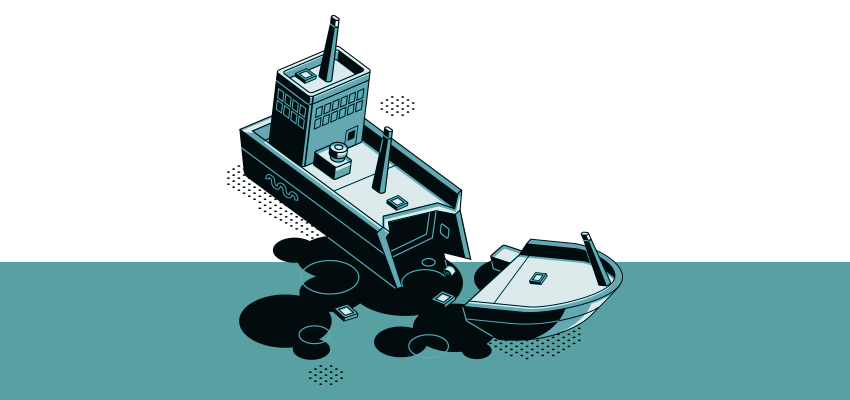The concepts behind what an corrective action plan must encompass are always evolving. It focus on solving process and production challenges, pushing growth in technology and knowledge. Many organizational issues are growing along with this movement, and with this comes new nonconformities with more complex audits.
This complexity can spread in the form of questions and uncertainties, leading teams to inevitable challenges.
To help in this endeavor, we have built these 5 action plan concepts to help in overcoming the nonconformities audited the most. We identified the most common mistakes companies make in Quality Management Systems and then broke them down in an corrective action plan list below:
In this article you will learn about:
- ISO 9001
- ISO 14001
- AS9100
- IATF 16949
- ISO 45001
ISO 9001
Operations running on ISO 9001 systems are struggling to adapt to the latest revision of the book, with its new concepts, clauses and notations. The most common mistakes are:
- Not defining stakeholders
- Lack of monitoring and measurement of processes
- No evaluation of internal/external risks
- Ineffectively capturing organizational knowledge
- Weak control of documents and data retention
- Missing Corrective Action Plans to mitigate risks
Action plan:
Focus on structuring clear processes to keep procedures updated and reviewed. Make sure to clarify the strategic direction of the company and cross-reference it with internal and external risks.
Define the effectiveness threshold of KPIs to launch each Action Plan Automation.

Define the KPIs needed to launch an corrective action plan. Detail risks that could appear along the way and keep records on all evidence of risk mitigation. Be very specific on each action needed, establishing organizational criteria and even evaluating external provider risks.
ISO 14001
Preventing potentially hazardous environmental incidents is the role of ISO 14001. The standard provides a systematic approach to this issue, but organizations that lack controls are failing on two main issues:
- Lack of evidence on leadership involvement/responsibility
- Not considering external providers and regulatory agencies within the “Context of the Organization”
Action plan:
Build a list of internal and external environmental issues that can affect the organization. Define the needs and expectations of stakeholders related to Environmental Management.

The Corrective action plan must evaluate or create controls that shows clearly the responses to changes on the environment.
AS9100
Mistakes in the aerospace standard tend to occur around a lack of detail. With strict procedures and controls, nonconformities are rare, but they can happen around:
- Weak implementation of risk-based thinking
- Lack of information on stakeholders and external providers
- Poor attention to product safety
- Mistakes during internal audits
Action plan:
Centralize procurement process controls, with detailed information on the provider’s service, making sure to determine risks and actions as well as review procedures.
By doing this, product safety risks can be mitigated and opportunities can be assigned to planning stages. Last but not least, simulate an audit process beforehand to make sure that questions and mistakes can be corrected ahead of time, unveiling the root causes.
IATF 16949
The International Automotive Task Force (IATF) created this standard to reduce defects and waste in industrial processes. Every system in this market must be certified and must make sure to control and address issues while also monitoring the consequences.
- Structuring and appliance of contingency plans
- Poor qualification of Internal auditor competency
- Lack of management of review inputs
- Misunderstanding production maintenance objectives
- Lack of awareness of control plan implications
Action plan:
Evaluation of risk processes follows a full Plan-Do-Check-Act (PDCA) cycle, paying attention to repair and rework issues to understand their implications. Test the contingency plan by evaluating evidence of effectiveness and read the standard thoroughly to avoid complex corrective action plans.
ISO 45001
Incidents from ill-health to exposure to hazardous material or even life-threatening processes/places must be taken seriously and the whole company must identify and adapt every environment to properly mitigate all possible risks.

Confusing procedures, lack of protective equipment, malfunctioning machinery or damaged tools are risks to workers and stakeholders, so here are the major nonconformities to keep in mind:
- Malfunction of protective equipment
- Failure to apply legal requirements
- Safety procedures not being followed/recorded
- Incidents are not reported as soon as they are found
Action plan:
Proactively report issues and incidents whenever they are encountered in order to reduce risks, identifying possible root causes and consequences. Apply corrective action to ensure that incidents and nonconformities will not occur again and monitor the effectiveness of new the plan implemented. Always review every procedures, equipment, tools and competencies to guarantee a safe environment for the organization.
Non-conformity is an essential tool for continuous improvement. Achieving excellence in non-conformity management demands that you follow the right steps, perform each activity with maximum effectiveness and implement a continuous improvement process. To overcome these challenges, support from the right technology is also critical.
